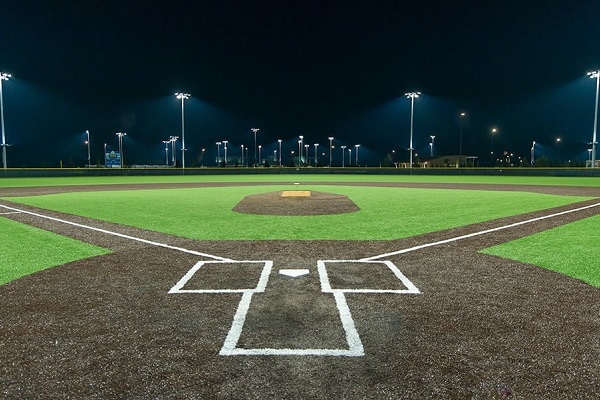Baseball, often dubbed America’s favorite pastime, is not only about the players’ skill and strategy but also about the atmosphere created in the stadium. One crucial aspect that significantly contributes to this atmosphere is lighting. Baseball field lighting serves not only practical purposes but also enhances the overall experience for players and spectators alike. Let’s delve into the significance of proper lighting in baseball stadiums and how advancements in technology have transformed this aspect of the game.

The Importance of Proper Lighting
Visibility and Safety: Perhaps the most fundamental aspect of baseball field lighting is ensuring adequate visibility for players. Properly illuminated fields allow players to track the trajectory of the ball accurately, make precise catches, and execute plays with confidence. Moreover, adequate lighting enhances safety by reducing the risk of collisions and injuries resulting from poor visibility.
Gameplay Enhancement: Lighting also impacts the gameplay itself. Inadequate lighting can obscure the ball’s path, making it challenging for batters to judge pitches accurately. On the other hand, well-designed lighting systems ensure that the game proceeds smoothly, without any hindrance due to poor visibility.
Fan Experience: Lighting doesn’t only affect the players; it significantly influences the experience of spectators as well. Properly illuminated stadiums allow fans to follow the action on the field with ease, enhancing their enjoyment of the game. Additionally, well-lit stadiums create a vibrant atmosphere, contributing to the overall allure of attending a live baseball game.
Evolution of Baseball Field Lighting
Traditional Lighting: In the past, traditional lighting systems, such as incandescent and metal halide lamps, were commonly used in baseball stadiums. While these systems provided adequate illumination, they were often plagued by issues such as glare, uneven lighting, and high energy consumption.
LED Technology: The advent of Light Emitting Diode (LED) technology has revolutionized baseball field lighting. LED lights offer numerous advantages over traditional lighting systems, including superior energy efficiency, longer lifespan, and better light quality. LED fixtures can also be precisely configured to eliminate glare and ensure uniform lighting across the entire playing field.
Smart Lighting Controls: Another innovation in baseball field lighting is the integration of smart lighting controls. These systems allow operators to adjust the brightness and color temperature of the lights remotely, providing flexibility to tailor the lighting conditions according to specific game requirements or environmental factors.
Considerations for Optimal Lighting Design
Uniformity: Achieving uniform lighting is essential to ensure consistent visibility throughout the playing field. Lighting designers employ advanced simulation software to model light distribution and optimize fixture placement for maximum uniformity.
Glare Control: Glare can adversely affect players’ performance and cause discomfort for spectators. Utilizing fixtures with precise optics and implementing glare mitigation strategies are crucial for minimizing glare and enhancing visual comfort.
Energy Efficiency: LED lighting not only offers superior performance but also helps reduce energy consumption and operating costs. By upgrading to LED fixtures and implementing smart lighting controls, stadiums can significantly lower their environmental footprint while maintaining excellent lighting quality.
Conclusion
Baseball field lighting plays a crucial role in shaping the game experience for both players and spectators. From ensuring optimal visibility and safety to enhancing gameplay and creating a vibrant atmosphere, proper lighting is indispensable in modern baseball stadiums. With advancements in LED technology and smart lighting controls, stadiums can achieve superior lighting performance while reducing energy consumption and operating costs. By prioritizing optimal lighting design, baseball stadiums can continue to provide an immersive and enjoyable experience for fans of America’s favorite pastime.
